Subfamily Bucerotinae | Genus Buceros Higher classification Buceros | |
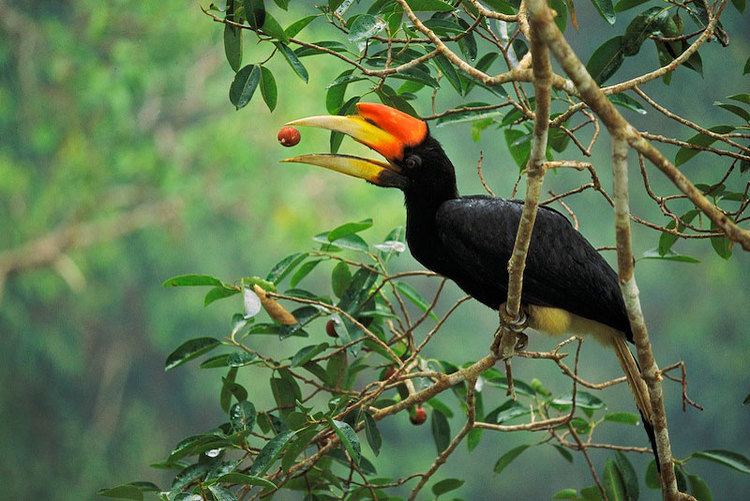 | ||
Similar Hornbill, Bird, Buceros, Great hornbill, Helmeted hornbill | ||
Rhinoceros hornbill
The rhinoceros hornbill (Buceros rhinoceros) is a large species of forest hornbill (Bucerotidae). In captivity it can live for up to 35 years. It is found in lowland and montane, tropical and subtropical climates and in mountain rain forests up to 1,400 metres altitude in Borneo, Sumatra, Java, the Malay Peninsula, Singapore, and southern Thailand.
Contents
- Rhinoceros hornbill
- Hd video footage of rhinoceros hornbill
- Description
- Diet and feeding
- Breeding
- Status and conservation
- References
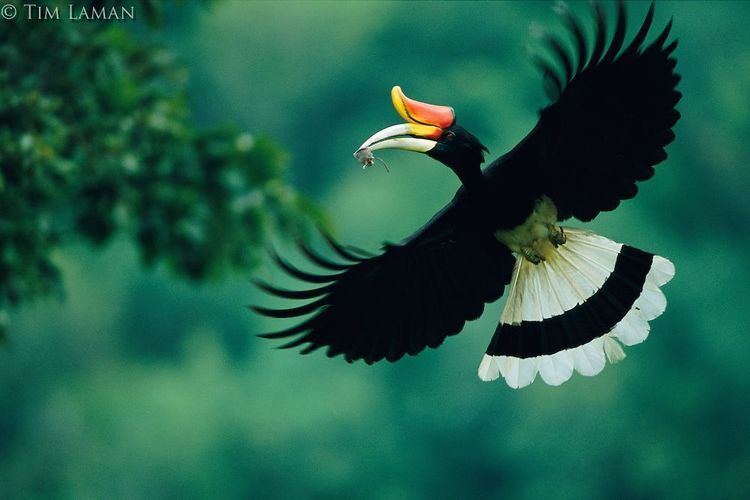
The rhinoceros hornbill is the state bird of the Malaysian state of Sarawak and the country's National Bird. Some Dayak people, especially the Ibanic groups, believe it to be the chief of worldly birds or the supreme worldly bird, and its statue is used to welcome the god of the augural birds, Sengalang Burong, to the feasts and celebrations of humankind. Contrary to some misunderstandings, the rhinoceros hornbill does not represent their war god, Sengalang Burong, who is represented in this world by the brahminy kite.
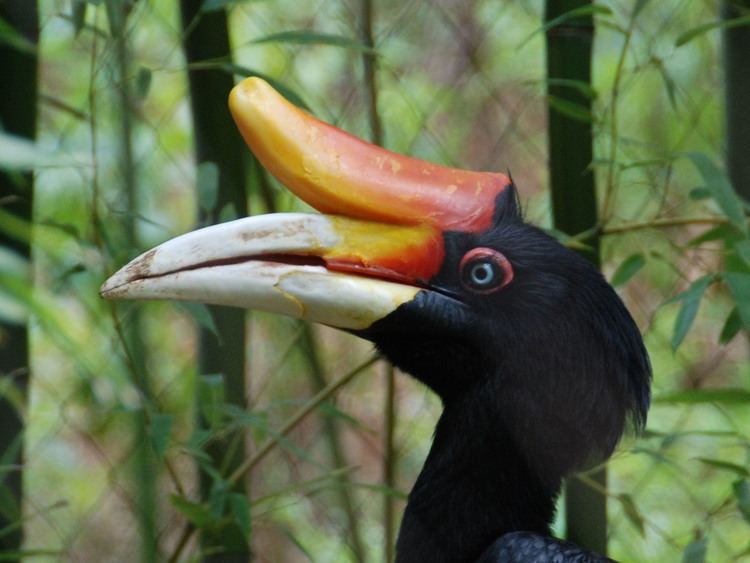
Hd video footage of rhinoceros hornbill
Description
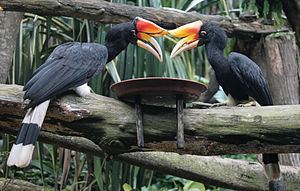
The rhinoceros hornbill is a large arboreal hornbill, 80 to 90 cm (31–35 in) long. The weigh varies by sex, with males weighing around 2,465 to 2,960 g (87.0–104.4 oz) and the females 2,040 to 2,330 g (72–82 oz). The plumage is predominately black, with white legs and vent and a white tail with a black band. The huge bill and casque are orange and red, the colour coming from preen oil rubbed on from the preen gland above the tail. The eyes of the male are red with black rims, and white with red rims in the female.
Diet and feeding
The diet of the rhinoceros hornbill is dominated by fruit, but it will take any insect, small reptile, rodent, and smaller birds that it can catch.
Breeding
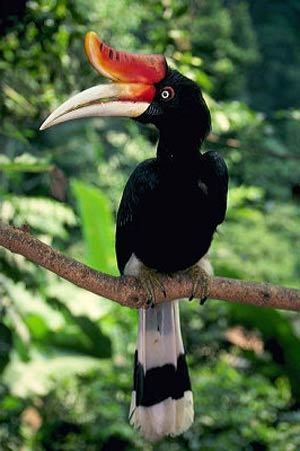
The courtship and bonding of these birds are critical, as the female must trust the male to provide her with everything when she is incubating and raising chicks. These hornbills make their nests inside tree trunks, and the female stays inside with the eggs and then with the chicks, while the male brings them food. After the eggs are laid, the male collects mud, and the pair pack that mud, along with food and feces, to wall up the entrance to the tree cavity. They leave a very small hole, just large enough for the male to feed the female, and later the chicks, and for the female to defecate through the hole. Once the chicks are fully feathered and old enough to leave the nest, the parents chip away the dry mud to let the chicks out.
Status and conservation
The rhinoceros hornbill faces a number of threats, including loss of its rainforest habitat, as well as hunting for its meat, and its skull and feathers.
